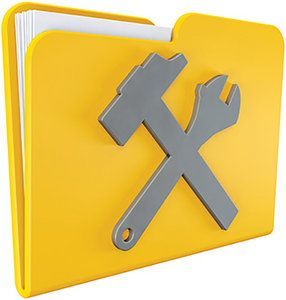New York's highest court of appeals has held that no-fault insurers cannot deny no-fault benefits where they unilaterally determine that a provider has committed misconduct based upon alleged fraudulent conduct. The Court held that this authority belongs solely to state regulators, specifically New York's Board of Regents, which oversees professional licensing and discipline. This follows a similar recent ruling in Florida reported in this publication.
Peer to Peer: Essential Tools for the Chiropractor's Toolbox
"Tools & tool boxes are truly critical success factors in today's business world. What tools do you need to add to your tool box & which tools do you need to brush off & begin using again?" — George M. Etheridge, international business mentor, speaker and trainer
The chiropractic adjustment will always be the foundational tool the profession relies on when delivering care, but one thing is certain: It's no longer the only tool in an increasing number of practices. Whether a consequence of the modern health care marketplace, consumer demand, an interested in expanded scope privileges or simply a desire to maximize patient care, more chiropractors are incorporating more tools into their respective clinical toolboxes these days.
To help you enhance your practice and increase your bottom line, we ask practicing doctors of chiropractic like you for ideas and solutions that have been tested in real-world environments. Our latest question: "In your experience / opinion, what are the essential patient care tools for the modern chiropractic practice (laser therapy, supplements, therapeutic taping, orthotics, vibration therapy, massage / acupuncture, etc.)?" Here's what your chiropractic colleagues said when asked for their insights.

Key Tools to Enhance the Care of Your Patients
"The essential pain-management tools that I utilize can interface simultaneously with the adjustment," said Dr. Peter Williams of Marietta, Ga. His supporting tools include "ice for acute pain and electric muscle stimulation for acute and chronic pain ... because each modality sets up quickly, another important criteria. The adjustment is more effective when performed concurrently with the application of these therapies."
According to Dr. Michael McIrvin of McPherson, Kan., "The essential patient tool for my practice is a microcurrent [device] that will treat any type of pain, [as well as] insomnia, anxiety, depression and stress. A working knowledge of extremity soft-tissue issues is very helpful, and I would not be without a good orthotics provider."
"My practice philosophy is, 'Give the patient what they need, not what my bottom line needs,' said St. Johns, Mich., DC Dr. Charles Graham. "I do use ancillary procedures that include nutrition, laser therapy, intersegmental traction, rehabilitative exercises, orthotics, and a soft-tissue technique (active release technique). I feel that the soft tissue treatment is as important as the corrective adjustment to get vertebral segmental function to improve."
For Dr. Kenneth Kaufman of Sarasota, Fla., "[T]he essential tools a doctor needs in practice are the ones that satisfy the three patient objectives: to be out of pain, to have an increase in quality of life and to get back to the activities they enjoy. In my experience, class IV laser therapy, therapeutic taping, soft-tissue techniques, manipulation and functional stability exercises are key components that help patients / athletes recover from injury."
"It is important that the doctor, as he/she adds a modality or technique, thinks of them as tools in their toolbox they have at their disposal to satisfy the patient's needs," he added.
New Bedford, Mass., chiropractor Dr. David Robinson said his toolbox includes custom orthotics; nutrition (educating / consulting patients on the importance of healthy eating / buying), but "not selling supplements / diet programs!"; and audio-visual entertainment.
"Specialties from weight loss to orthotics" are among the tools Dr. Steven Griffith of Redcliffe, Queensland (Australia) relies on in his practice, as well as other care programs he said are designed to help patients address "pain to pins and needles" and progress from "restriction to excellence, slowness to speed, etc."
"Injectable nutrients, hands down," are essential for Dr. William Higgins of Coeur d'Alene, Idaho. "Prolotherapy, Prolozone, neural therapy for treatment of scars that cause interference fields." However, Dr. Higgins was quick to comment: "Any unlicensed tattoo 'artist' or piercing studio can use needles to pierce the skin, but licensed doctors of chiropractic in most states cannot? Ridiculous."
Portland, Ore., chiropractor Dr. Cathy Cummins, a professor for more than 20 years, tells her students "to get tools similar to blocks, a speeder board, wedge adjusting tool, Activator-type tool, Graston-like instrument and [kinesiology] tape. Adjust and teach core exercises! That's the core. An F/D table is the next essential. I guess interferential current or ultrasound combo would be my modality of choice when necessary."
Expanding Your Care Beyond the Office Walls
Dr. Mark Glesener of Saint Charles, Ill., offered an interesting take on this month's question, suggesting a pivotal "tool" for the chiropractic profession involves expanding care into the corporate wellness market:
"Most MDs (60%) now work for hospitals because a private practice has become exceedingly difficult to manage and grow. We are floating out there battling $2,500 deductibles and selling cash plans, trying to convince people they need 96 visits to be healed. Sad that what we do has become so warped and fallen on such hard times.
"I see a potential solution: A great untapped market exits in providing onsite services at local companies. Half of my practice is involved with onsite care. ... I know that Standard Process has developed their own version of this. Northwestern is attempting the same thing.
"Don't know what else to say other than a push into this area would be good to make for our profession. Go to where the money starts and the people work. The more it is talked about, the more it will become an idea that doctors move forward toward."
But You Can't Beat a Good Adjustment...
While many of your peers listed specific devices and therapeutic procedures they believe are important in delivering optimal patient care, most respondents, even those who utilize a variety of tools in practice, emphasized that the adjustment remains their primary tool of choice.
"What are the essential tools for the modern chiropractic office? A good adjusting table that is appropriate for the technique the chiropractor is planning to use, two hands or [an] appropriate adjusting instrument, Green Books or other philosophy texts so that one actually knows and understands what chiropractic is," said Dr. Marcus Dunn of Charlotte, N.C.
Dr. Rod Frieling of Colorado Springs, Colo., agreed: "An adjusting table or device is the essential item in a chiropractic office," he said.
Dr. Williams was quick to emphasize that the adjustment is "the foundation of the doctor of chiropractic," while Dr. Higgins stated, "The most essential care tool is the adjustment." Dr. Robinson named chiropractic spinal adjustments as his primary tool and noted the importance of "keeping chiropractic 'on track' and not deviating very far from its vitalistic origins."
Dr. Griffith, who said orthotics, weight loss and other care programs are key elements of his toolbox, added that his most important tools are "being able to identify and adjust subluxations of every bone of the body, and to give support to its ability to heal and repair, including every known therapy and program of care known or perceived; and to be able to communicate that message in a manner understandable to [your] patient base, with a unified message of what chiropractic is. ... All without the need for drugs and surgery."
Philosophy Meets Patient Careâ?©So, what’s in your clinical toolbox? Is the adjustment enough, or do you feel your patients – and/or practice – benefit from additional tools? It’s clearly not a black-and-white issue, but perhaps the questions to ask your-self in today’s patient-centered health care environment are: What’s best for the patient? What can you offer them that will, as Dr. Kaufman stated, satisfy the three primary patient objectives: “to be out of pain, to have an increase in quality of life and to get back to the activities they enjoy”? Whatever strategy / tools you employ, if your patients appreciate what you offer them, you’re doing the right thing.
Editor's note: Interested in joining our focus pool and sharing your perspectives on chiropractic practice with your peers? Email editorial@mpamedia.com. Every few months, we send out a new question and request your input / insights.



